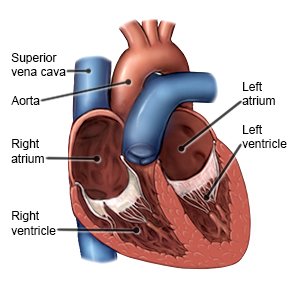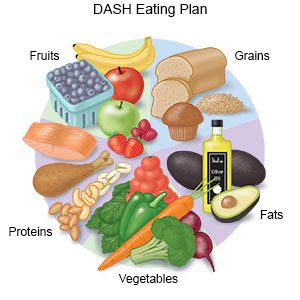Aortic Balloon Valvuloplasty
Medically reviewed by Drugs.com. Last updated on Sep 23, 2025.
Aortic balloon valvuloplasty is a procedure to open your aortic valve. This allows blood to flow more easily through your heart. The aortic valve is the door between the left ventricle and the aorta.
 |
DISCHARGE INSTRUCTIONS:
Call your local emergency number (911 in the US) if:
- You have any of the following signs of a heart attack:
- Squeezing, pressure, or pain in your chest
- You may also have any of the following:
- Discomfort or pain in your back, neck, jaw, stomach, or arm
- Shortness of breath
- Nausea or vomiting
- Lightheadedness or a sudden cold sweat
- You cough up blood.
Call your doctor or cardiologist if:
- Blood soaks through your bandage.
- Your heart is fluttering.
- Your arm or leg feels warm, tender, and painful. It may look swollen and red.
- You have a fever.
- Your incision is red, swollen, or draining pus.
- You have nausea or vomiting.
- You have questions or concerns about your condition or care.
Medicines:
You may need any of the following:
- Antiplatelets , such as aspirin, help thin your blood so it flows easily through your heart.
- Blood thinners help prevent blood clots. Clots can cause strokes, heart attacks, and death. Many types of blood thinners are available. Your healthcare provider will give you specific instructions for the type you are given. The following are general safety guidelines to follow while you are taking a blood thinner:
- Watch for bleeding and bruising. Watch for bleeding from your gums or nose. Watch for blood in your urine and bowel movements. Use a soft washcloth on your skin, and a soft toothbrush to brush your teeth. This can keep your skin and gums from bleeding. If you shave, use an electric shaver. Do not play contact sports.
- Tell your dentist and other healthcare providers that you take a blood thinner. Wear a bracelet or necklace that says you take this medicine.
- Do not start or stop any other medicines or supplements unless your healthcare provider tells you to. Many medicines and supplements cannot be used with blood thinners.
- Take your blood thinner exactly as prescribed by your healthcare provider. Do not skip a dose or take less than prescribed. Tell your provider right away if you forget to take your blood thinner, or if you take too much.
- Take your medicine as directed. Contact your healthcare provider if you think your medicine is not helping or if you have side effects. Tell your provider if you are allergic to any medicine. Keep a list of the medicines, vitamins, and herbs you take. Include the amounts, and when and why you take them. Bring the list or the pill bottles to follow-up visits. Carry your medicine list with you in case of an emergency.
Related medications
Care for your wound as directed:
Carefully wash the wound with soap and water. Pat the area dry with a clean towel. Check for signs of infection, such as redness or pus. You may have a bruise that goes from your groin down your leg. You can apply ice to help the bruise heal. Ice can also help with pain or swelling. Use an ice pack, or put crushed ice in a plastic bag. Cover it with a towel and place it on your groin for 15 to 20 minutes every hour, or as directed.
Drink liquids as directed:
Ask your healthcare provider how much liquid to drink each day and which liquids are best for you. You may need to drink 6 to 8 cups of liquid each day. Limit the amount of caffeine you drink.
Eat heart healthy foods:
Eat foods low in cholesterol, fat, and sodium (salt). Heart healthy foods include fruits, vegetables, whole-grain breads, low-fat dairy products, beans, lean meats, and fish. Ask for more information about a heart healthy diet.
 |
Maintain a healthy weight:
Ask your healthcare provider how much you should weigh. Ask him or her to help you create a weight loss plan if you are overweight.
Follow up with your doctor or cardiologist as directed:
Write down your questions so you remember to ask them during your visits.
© Copyright Merative 2025 Information is for End User's use only and may not be sold, redistributed or otherwise used for commercial purposes.
The above information is an educational aid only. It is not intended as medical advice for individual conditions or treatments. Talk to your doctor, nurse or pharmacist before following any medical regimen to see if it is safe and effective for you.
Further information
Always consult your healthcare provider to ensure the information displayed on this page applies to your personal circumstances.
